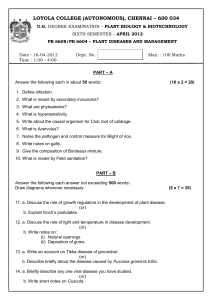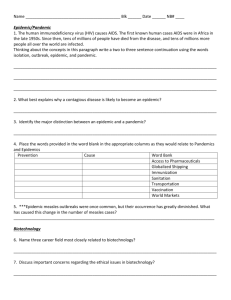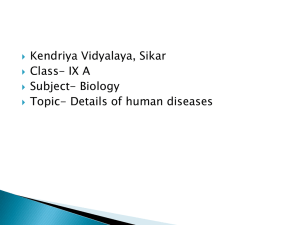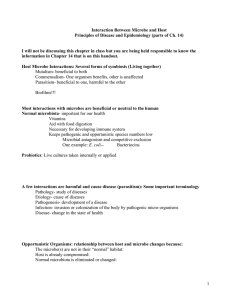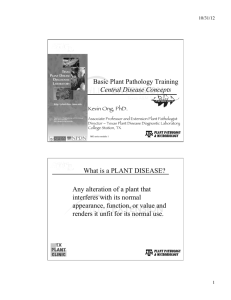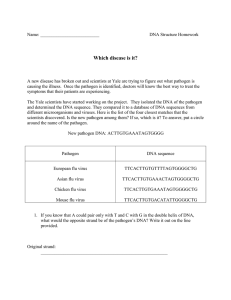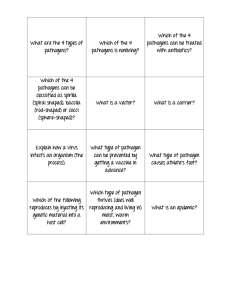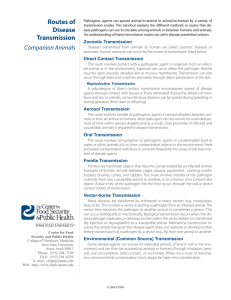Terminology of infectious diseases
advertisement
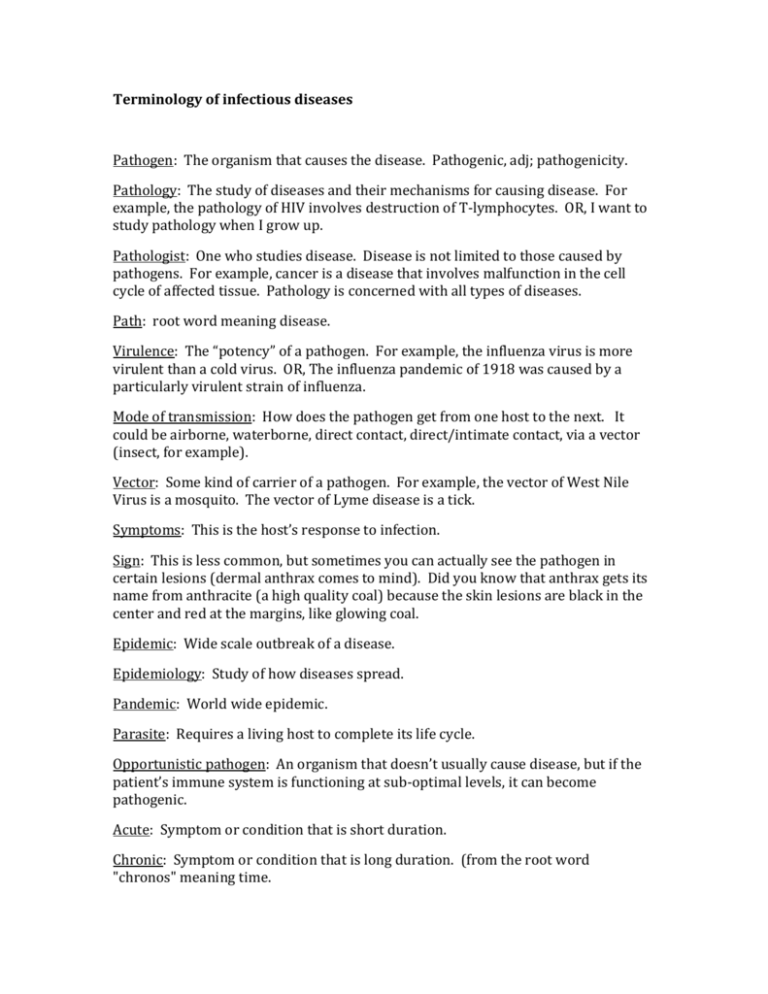
Terminology of infectious diseases Pathogen: The organism that causes the disease. Pathogenic, adj; pathogenicity. Pathology: The study of diseases and their mechanisms for causing disease. For example, the pathology of HIV involves destruction of T-lymphocytes. OR, I want to study pathology when I grow up. Pathologist: One who studies disease. Disease is not limited to those caused by pathogens. For example, cancer is a disease that involves malfunction in the cell cycle of affected tissue. Pathology is concerned with all types of diseases. Path: root word meaning disease. Virulence: The “potency” of a pathogen. For example, the influenza virus is more virulent than a cold virus. OR, The influenza pandemic of 1918 was caused by a particularly virulent strain of influenza. Mode of transmission: How does the pathogen get from one host to the next. It could be airborne, waterborne, direct contact, direct/intimate contact, via a vector (insect, for example). Vector: Some kind of carrier of a pathogen. For example, the vector of West Nile Virus is a mosquito. The vector of Lyme disease is a tick. Symptoms: This is the host’s response to infection. Sign: This is less common, but sometimes you can actually see the pathogen in certain lesions (dermal anthrax comes to mind). Did you know that anthrax gets its name from anthracite (a high quality coal) because the skin lesions are black in the center and red at the margins, like glowing coal. Epidemic: Wide scale outbreak of a disease. Epidemiology: Study of how diseases spread. Pandemic: World wide epidemic. Parasite: Requires a living host to complete its life cycle. Opportunistic pathogen: An organism that doesn’t usually cause disease, but if the patient’s immune system is functioning at sub-optimal levels, it can become pathogenic. Acute: Symptom or condition that is short duration. Chronic: Symptom or condition that is long duration. (from the root word "chronos" meaning time.

